Shun Arima: 3rd Year at University of Tsukuba, School of Art & Design
All the people we met during the making of this film took seriously the words, “We want to make a movie” of us students, whom they had never met or known, and gave us genuine support with the interviews. As we were nearing the completion of the movie, rather than feeling like “We made the movie ourselves”, we came to feel “The people who gave us support let us make the movie”. I believe that the movie has embodied the positive energy of all these people. I think that such energy, even if only slightly, has the power to change the world. I wonder how the world will change after the screening. I would like to keep my eyes open forever.
Production
The FUKUSHIMA VOICE is a movie advocating the theme, “To report and deliver the voices of the people of Fukushima”, and was created by Tsukuba University’s Creative Reconstruction Project Team in collaboration with Uplink, which produces and distributes movies. Eleven students from Tsukuba University took part and, with support from professional filmmakers, worked on making the movie. It began with their visit to the city of Iwaki in March 2013. They went around getting acquainted with the residents with whom they asked to do interviews. By the end of the film-shooting camp in September, they had a total of 96 hours of filmed video.
“We’ve met up with a lot of people since the earthquake.” These are words that we often heard during the interviews. The words correspond exactly to the sentiments of the movie production team as well.
The FUKUSHIMA VOICE is a movie advocating the theme, “To report and deliver the voices of the people of Fukushima”, and was created by Tsukuba University’s Creative Reconstruction Project Team in collaboration with Uplink, which produces and distributes movies. Eleven students from Tsukuba University took part and, with support from professional filmmakers, worked on making the movie. It began with their visit to the city of Iwaki in March 2013. They went around getting acquainted with the residents with whom they asked to do interviews. By the end of the film-shooting camp in September, they had a total of 96 hours of filmed video.
“We’ve met up with a lot of people since the earthquake.” These are words that we often heard during the interviews. The words correspond exactly to the sentiments of the movie production team as well.
directors
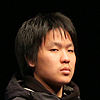

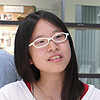
Miya Okazaki: 2nd Year at University of Tsukuba, School of Human Sciences
Through this work, which deals with real people, I have become aware of the world after “that day”, 3.11, and have decided to not turn my back on my life from now on and to directly face what has happened. I wish to convey everything that the people of Iwaki, with whom we were able to come in contact during the week of the film-shooting, have shouldered since “that day”. In the movie, we have captured the lives of the people two and a half years after the devastating earthquake. It is the encountering of actual voices, which have been engraved deep in our hearts. Almost 3 years since “that day”, I feel, even right now, that what has been embedded in our hearts is the most valuable thing we have gained from this movie, “IWAKI NOTE (Fukushima Voice)”. I still have no idea of what might be conveyed to the people who see the movie. I hope that, in the realm of the movie, “IWAKI NOTE (Fukushima Voice)”, they will subtly feel our existence behind the finder of the camera.
Through this work, which deals with real people, I have become aware of the world after “that day”, 3.11, and have decided to not turn my back on my life from now on and to directly face what has happened. I wish to convey everything that the people of Iwaki, with whom we were able to come in contact during the week of the film-shooting, have shouldered since “that day”. In the movie, we have captured the lives of the people two and a half years after the devastating earthquake. It is the encountering of actual voices, which have been engraved deep in our hearts. Almost 3 years since “that day”, I feel, even right now, that what has been embedded in our hearts is the most valuable thing we have gained from this movie, “IWAKI NOTE (Fukushima Voice)”. I still have no idea of what might be conveyed to the people who see the movie. I hope that, in the realm of the movie, “IWAKI NOTE (Fukushima Voice)”, they will subtly feel our existence behind the finder of the camera.
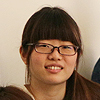
Kaede Sasaki: 2nd Year at University of Tsukuba, School of Art & Design
While taking part in the making of the movie, I realized that the earthquake that had occurred two and a half years ago had somehow slipped into another realm. I met a lot of people through the interviews, but the first time I visited the temporary housing, I felt quite nervous about whether the people would embrace a stranger like me. However, at one point during the course of our visits, there came a moment when I felt that the relationship was not between the evacuees and college students who came to cover them, but we were relating like individual human beings. That was when, for the first time, I felt that it was not about the fragments of stories in my mind, but that it was about life that has continued since the day the earthquake hit them. I also felt blessed that they had opened up, even if only a little, to us in the timeline of their lives. At the same time, I felt strongly that the timeline continues on and that we have a responsibility for having stepped into their lives. I hope that the viewers will relate to and think about the times ahead for the people we met through the movie.
While taking part in the making of the movie, I realized that the earthquake that had occurred two and a half years ago had somehow slipped into another realm. I met a lot of people through the interviews, but the first time I visited the temporary housing, I felt quite nervous about whether the people would embrace a stranger like me. However, at one point during the course of our visits, there came a moment when I felt that the relationship was not between the evacuees and college students who came to cover them, but we were relating like individual human beings. That was when, for the first time, I felt that it was not about the fragments of stories in my mind, but that it was about life that has continued since the day the earthquake hit them. I also felt blessed that they had opened up, even if only a little, to us in the timeline of their lives. At the same time, I felt strongly that the timeline continues on and that we have a responsibility for having stepped into their lives. I hope that the viewers will relate to and think about the times ahead for the people we met through the movie.
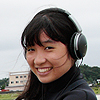
Shino Santo: 2nd Year at University of Tsukuba, School of Social & International Studies
My intention was not to film people in distress, nor people struggling to move on in the aftermath of the catastrophic earthquake. I simply wanted to get to know the people there. I just wanted to shoot their natural, undisguised, true selves. But it was not easy, because every single person that appears in the movie is living with his/her own thoughts and circumstances. The film is centered on the earthquake. Since it is not fiction, there are no dramatic turns of events or a climax. The camera simply pursues the everyday life of the people. There is no happy ending or a bad ending. The movie will come to an end at some point, but life goes on forever. This is a record of a fragmentary moment in the lives of the people of Iwaki. No one wanted the devastating earthquake to happen. But there were many incidents and encounters that would have gone unnoticed if it were not for the earthquake. I hope that the viewers will feel such thoughts and encounters in the movie and associate them to their current lives.
My intention was not to film people in distress, nor people struggling to move on in the aftermath of the catastrophic earthquake. I simply wanted to get to know the people there. I just wanted to shoot their natural, undisguised, true selves. But it was not easy, because every single person that appears in the movie is living with his/her own thoughts and circumstances. The film is centered on the earthquake. Since it is not fiction, there are no dramatic turns of events or a climax. The camera simply pursues the everyday life of the people. There is no happy ending or a bad ending. The movie will come to an end at some point, but life goes on forever. This is a record of a fragmentary moment in the lives of the people of Iwaki. No one wanted the devastating earthquake to happen. But there were many incidents and encounters that would have gone unnoticed if it were not for the earthquake. I hope that the viewers will feel such thoughts and encounters in the movie and associate them to their current lives.
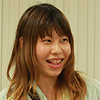
Kinusa Suzuki: 2nd Year at University of Tsukuba, School of Art & Design
When I told my parents, “I might go surfing in Fukushima for the movie”, they said, “Absolutely not!” Since I was told by Kobayashi-san that he measures the radiation level and takes it into consideration before going into the sea, I was a bit frustrated by the ignorance of my parents who wouldn’t listen to my side of the story and just said no. Ignorance is so frightening. Before conducting the interviews, I did not know what actually happened when the tsunami hit, nor the feelings of the people who did not evacuate, nor that there are so many people who are trying to live on with a positive attitude. Somewhere in my mind, I used to think that “Delivering the voices of the people of Fukushima” was just an egocentric, self-serving act, but finally, I am beginning to understand the significance. Since the days in Iwaki were spent meeting new people and being exposed to new ideas, every day was very intense. On our way home from a fun interview, we would not be surprised to see just the foundations of homes of a residential area which had been swept by the tsunami. I felt a shock in my heart when I thought of the number of people who may be smiling on the outside but are bearing the pain inside them.
When I told my parents, “I might go surfing in Fukushima for the movie”, they said, “Absolutely not!” Since I was told by Kobayashi-san that he measures the radiation level and takes it into consideration before going into the sea, I was a bit frustrated by the ignorance of my parents who wouldn’t listen to my side of the story and just said no. Ignorance is so frightening. Before conducting the interviews, I did not know what actually happened when the tsunami hit, nor the feelings of the people who did not evacuate, nor that there are so many people who are trying to live on with a positive attitude. Somewhere in my mind, I used to think that “Delivering the voices of the people of Fukushima” was just an egocentric, self-serving act, but finally, I am beginning to understand the significance. Since the days in Iwaki were spent meeting new people and being exposed to new ideas, every day was very intense. On our way home from a fun interview, we would not be surprised to see just the foundations of homes of a residential area which had been swept by the tsunami. I felt a shock in my heart when I thought of the number of people who may be smiling on the outside but are bearing the pain inside them.
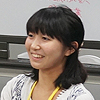
Yuri Suzuki: 2nd Year at University of Tsukuba, School of Art & Design
After the Great East Japan Earthquake, every time I saw on the news or read in the newspapers about the conditions in Fukushima, I would wonder if there was anything I could do. I come from Ibaraki prefecture, which is next to Fukushima prefecture. The accident at the nuclear power station is definitely not something that happened far away. Even so, as time passes by, it all seems to become someone else’s problem and the catastrophic earthquake begins to be something of the past. Because I felt uneasy and had doubts about the trend, I decided to take part in the making of the film. But as I began to work on location for the film, I felt the devastating earthquake, which was gradually starting to feel distant, become closer to me again. The interviews were not merely about listening to people, but also made us, the ones asking the questions, think hard about the earthquake and Iwaki. The earthquake has not yet ended in Iwaki. But what you see in Iwaki is not necessary the tragic “extraordinary” days, but the reality of the people working hard searching for ways to live an “ordinary” life. We would like the people who see the movie to think about the issue with us.
After the Great East Japan Earthquake, every time I saw on the news or read in the newspapers about the conditions in Fukushima, I would wonder if there was anything I could do. I come from Ibaraki prefecture, which is next to Fukushima prefecture. The accident at the nuclear power station is definitely not something that happened far away. Even so, as time passes by, it all seems to become someone else’s problem and the catastrophic earthquake begins to be something of the past. Because I felt uneasy and had doubts about the trend, I decided to take part in the making of the film. But as I began to work on location for the film, I felt the devastating earthquake, which was gradually starting to feel distant, become closer to me again. The interviews were not merely about listening to people, but also made us, the ones asking the questions, think hard about the earthquake and Iwaki. The earthquake has not yet ended in Iwaki. But what you see in Iwaki is not necessary the tragic “extraordinary” days, but the reality of the people working hard searching for ways to live an “ordinary” life. We would like the people who see the movie to think about the issue with us.
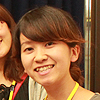
Misaki Tachibana: 2nd Year at University of Tsukuba, School of Art & Design
It’s been two and a half years since the devastating earthquake. Since I had never been to Iwaki, I was a bit worried about taking part in this movie, which runs around covering the city. Because there was so much that I didn’t know, I wondered if I’d be able to do a proper interview. Would I be able to get across the intentions of the dialog? How many people would actually see this film? I focused my interviews on agriculture, which I was particularly interested in. It was an unknown territory for me, but with the proper attitude, the people responded favorably and I was able to find out about the current situation: about how the earthquake is perceived by the farmers whom I met for the first time, about the bonds linked by food, and how the farmers are facing up to the harmful rumors. I suppose I won’t have much involvement with farmers in my future life. While “IWAKI NOTE (Fukushima Voice)” is a story about the encounters of many different people, it also shows the strength and resilience of the people of Fukushima.
It’s been two and a half years since the devastating earthquake. Since I had never been to Iwaki, I was a bit worried about taking part in this movie, which runs around covering the city. Because there was so much that I didn’t know, I wondered if I’d be able to do a proper interview. Would I be able to get across the intentions of the dialog? How many people would actually see this film? I focused my interviews on agriculture, which I was particularly interested in. It was an unknown territory for me, but with the proper attitude, the people responded favorably and I was able to find out about the current situation: about how the earthquake is perceived by the farmers whom I met for the first time, about the bonds linked by food, and how the farmers are facing up to the harmful rumors. I suppose I won’t have much involvement with farmers in my future life. While “IWAKI NOTE (Fukushima Voice)” is a story about the encounters of many different people, it also shows the strength and resilience of the people of Fukushima.
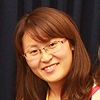
Miwako Chiba: 2nd Year at University of Tsukuba, School of Art & Design
Although I had felt the earthquake of intensity Shindo 6 (on the Japanese seismic scale) in my hometown in Iwate prefecture and experienced firsthand the horror of the earthquake, the enormous issues that confront Fukushima somehow felt like someone else’s problem. When we visited the sea to work on the project, the sea looked calm, but the adjacent town, which was supposedly there, was just a vast area of bare foundations. The weirdness of the scenery hit me so hard that it has stuck in my mind as something strange. I think it was the first time that I actually felt close to and identified with the damages of the earthquake. Through the interviews, thoughts and emotions that I had hardly ever experienced before were triggered, and I learned how frustrating it is to be unable to find the right words to express my feelings. Despite my immaturity as a reporter, the people of Iwaki took me seriously, and I believe that they helped me grow. First and foremost, we must deliver the voices of the people who cooperated with us, but I would also like to channel into the movie the emotions and vibes we felt during the interviews but were unable to put into words.
Although I had felt the earthquake of intensity Shindo 6 (on the Japanese seismic scale) in my hometown in Iwate prefecture and experienced firsthand the horror of the earthquake, the enormous issues that confront Fukushima somehow felt like someone else’s problem. When we visited the sea to work on the project, the sea looked calm, but the adjacent town, which was supposedly there, was just a vast area of bare foundations. The weirdness of the scenery hit me so hard that it has stuck in my mind as something strange. I think it was the first time that I actually felt close to and identified with the damages of the earthquake. Through the interviews, thoughts and emotions that I had hardly ever experienced before were triggered, and I learned how frustrating it is to be unable to find the right words to express my feelings. Despite my immaturity as a reporter, the people of Iwaki took me seriously, and I believe that they helped me grow. First and foremost, we must deliver the voices of the people who cooperated with us, but I would also like to channel into the movie the emotions and vibes we felt during the interviews but were unable to put into words.
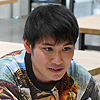
Shun Tsuzawa: 2nd Year at University of Tsukuba, Graduate School, Art & Design Major
Only after the earthquake, did I become aware of the nuclear power stations. It made me do some serious soul-searching, as my grandmother was a victim of the atomic bomb and I grew up in Hiroshima. I decided to take part in the film making, because there were too many things that I did not know about and I wanted to listen to the voices of many different people. The first person that I did the interview with was a Buddhist monk. At first, I wanted to hear his story from the standpoint of a monk, but it seemed as if I was pleading for words that I wanted to hear. As we got talking and when he started to talk about his family and his interest in railways, his expression softened. I realized that I wanted to hear the voice, not of the profession, but of the person in front of me. Sometimes, we were the ones being asked for an opinion. “If we catch some fish in Iwaki, would you eat them?” The question from a fisherman made me feel as if I were pulled into the spotlight as the subject of the incident. As for the answer to that question, I am still at a loss. But I would like to continue thinking about it as a problem that we ourselves are faced with.
Only after the earthquake, did I become aware of the nuclear power stations. It made me do some serious soul-searching, as my grandmother was a victim of the atomic bomb and I grew up in Hiroshima. I decided to take part in the film making, because there were too many things that I did not know about and I wanted to listen to the voices of many different people. The first person that I did the interview with was a Buddhist monk. At first, I wanted to hear his story from the standpoint of a monk, but it seemed as if I was pleading for words that I wanted to hear. As we got talking and when he started to talk about his family and his interest in railways, his expression softened. I realized that I wanted to hear the voice, not of the profession, but of the person in front of me. Sometimes, we were the ones being asked for an opinion. “If we catch some fish in Iwaki, would you eat them?” The question from a fisherman made me feel as if I were pulled into the spotlight as the subject of the incident. As for the answer to that question, I am still at a loss. But I would like to continue thinking about it as a problem that we ourselves are faced with.
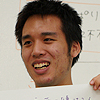
Keisuke Nakagawa: 4th Year at University of Tsukuba, School of Human Sciences
At an interview with a person living in the temporary housing, I asked, “How do you feel about people gradually forgetting about what happened in Fukushima?” The answer was not gloomy. “It’s okay if people forget. But, once in a while, I hope something will remind them of us.” It is something that has left a lasting impression on my mind. Although it may sound cruel, since the devastating earthquake and nuclear power station accident do not directly concern many Japanese people, it might only be natural for people to forget about them to some degree, when considering the function of the human brain. At the risk of being misunderstood, I think that people who are not closely associated with the tragedy do not have to reflect on it every single day. However, I would like them to take some time to think about Fukushima when they see the movie, or when something prompts them to do so. Those are some of the things I thought about when shooting and editing the movie. I hope that the movie will be able to inspire such thoughts.
At an interview with a person living in the temporary housing, I asked, “How do you feel about people gradually forgetting about what happened in Fukushima?” The answer was not gloomy. “It’s okay if people forget. But, once in a while, I hope something will remind them of us.” It is something that has left a lasting impression on my mind. Although it may sound cruel, since the devastating earthquake and nuclear power station accident do not directly concern many Japanese people, it might only be natural for people to forget about them to some degree, when considering the function of the human brain. At the risk of being misunderstood, I think that people who are not closely associated with the tragedy do not have to reflect on it every single day. However, I would like them to take some time to think about Fukushima when they see the movie, or when something prompts them to do so. Those are some of the things I thought about when shooting and editing the movie. I hope that the movie will be able to inspire such thoughts.
Production: Tsukuba University Creative Reconstruction Project (CR Project)
A project, led by the University of Tsukuba, School of Art & Design, to carry out a creative reconstruction. In cooperation with the arts and other professional disciplines of the university and with the students also taking part, the objective is to address the multiple needs of the disaster stricken areas and engage in Creative Reconstruction. http://www.geijutsu.tsukuba.ac.jp/~cr
A project, led by the University of Tsukuba, School of Art & Design, to carry out a creative reconstruction. In cooperation with the arts and other professional disciplines of the university and with the students also taking part, the objective is to address the multiple needs of the disaster stricken areas and engage in Creative Reconstruction. http://www.geijutsu.tsukuba.ac.jp/~cr
Production: UPLINK
In the business of film distribution, production, “videoizing” and related line of work, as well as running “UPLINK FACTORY” and “UPLINK X” in Shibuya, Tokyo, where movie screenings and events can be held. It introduces information regardless of genre. Films: “Pripyat” (2012), “Into Eternity” (2011), “Tintin et Moi” (2012). Major film productions: “Love is the Devil: Study for a Portrait of Francis Bacon” (1999, a co-production with BBC), “Strawberry Shortcakes” (2006), etc.
In the business of film distribution, production, “videoizing” and related line of work, as well as running “UPLINK FACTORY” and “UPLINK X” in Shibuya, Tokyo, where movie screenings and events can be held. It introduces information regardless of genre. Films: “Pripyat” (2012), “Into Eternity” (2011), “Tintin et Moi” (2012). Major film productions: “Love is the Devil: Study for a Portrait of Francis Bacon” (1999, a co-production with BBC), “Strawberry Shortcakes” (2006), etc.
Executive Producer: Kenji Kubota
After working as a curator at The Ueno Royal Museum and at Art Tower Mito Contemporary Art Gallery, he became an independent curator in 2006. He worked on the curation of a number of exhibitions both in and out of Japan, including “Money Talk” (2007, Hiroshima City Museum of Contemporary Art), “Twist and Shout” (2009, BACC, Bangkok), “Roppongi Crossing: Can There Be Art?” (2010, Mori Art Museum), and many others. Since 2012, as Associate Professor of University of Tsukuba, he has taken on the position of Sub-Leader of the Creative Reconstruction Project.
After working as a curator at The Ueno Royal Museum and at Art Tower Mito Contemporary Art Gallery, he became an independent curator in 2006. He worked on the curation of a number of exhibitions both in and out of Japan, including “Money Talk” (2007, Hiroshima City Museum of Contemporary Art), “Twist and Shout” (2009, BACC, Bangkok), “Roppongi Crossing: Can There Be Art?” (2010, Mori Art Museum), and many others. Since 2012, as Associate Professor of University of Tsukuba, he has taken on the position of Sub-Leader of the Creative Reconstruction Project.
Producer: Takashi Asai
Worked as stage director for Shuji Terayama’s Tenjo Sajiki. Then, in 1987, he set up UPLINK Company. He creates, produces and distributes movies, and runs “UPLINK FACTORY”, “UPLINK X”, “ROOM”, where movie screenings and events can be held, “UPLINK GALLERY”, an exhibit space, and “TABELA”, a multinational restaurant. He is also the chief editor of the web magazine, “webDICE”.
Worked as stage director for Shuji Terayama’s Tenjo Sajiki. Then, in 1987, he set up UPLINK Company. He creates, produces and distributes movies, and runs “UPLINK FACTORY”, “UPLINK X”, “ROOM”, where movie screenings and events can be held, “UPLINK GALLERY”, an exhibit space, and “TABELA”, a multinational restaurant. He is also the chief editor of the web magazine, “webDICE”.
Line Producer: Kazuo Ohsawa
After graduating from the Japan Academy of Moving Images, he becomes involved, mainly as a producer, in filmmaking of independent documentaries. Prominent works he took part in include “Back Drop Kurdistan” (2007, Director, Masaru Nomoto), “The Duckling” (2010, Director, Sayaka Ono), “LINE” (2010, Director, Tadasuke Kotani), “Tonaru-hito, Never Let Me Go” (2010, Director, Kazuya Tachikawa), “Documentary Film: The Cat That Lived A Million Times” (2012, Director, Tadasuke Kotani), etc.
After graduating from the Japan Academy of Moving Images, he becomes involved, mainly as a producer, in filmmaking of independent documentaries. Prominent works he took part in include “Back Drop Kurdistan” (2007, Director, Masaru Nomoto), “The Duckling” (2010, Director, Sayaka Ono), “LINE” (2010, Director, Tadasuke Kotani), “Tonaru-hito, Never Let Me Go” (2010, Director, Kazuya Tachikawa), “Documentary Film: The Cat That Lived A Million Times” (2012, Director, Tadasuke Kotani), etc.
Assistant Producer: Masaharu Kuramochi
After graduating from the Japan Academy of Moving Images, he becomes involved, mainly as a producer, in filmmaking of independent documentaries. Prominent works he took part in include “Back Drop Kurdistan” (2007, Director, Masaru Nomoto), “The Duckling” (2010, Director, Sayaka Ono), “LINE” (2010, Director, Tadasuke Kotani), “Tonaru-hito, Never Let Me Go” (2010, Director, Kazuya Tachikawa), “Documentary Film: The Cat That Lived A Million Times” (2012, Director, Tadasuke Kotani), etc.
After graduating from the Japan Academy of Moving Images, he becomes involved, mainly as a producer, in filmmaking of independent documentaries. Prominent works he took part in include “Back Drop Kurdistan” (2007, Director, Masaru Nomoto), “The Duckling” (2010, Director, Sayaka Ono), “LINE” (2010, Director, Tadasuke Kotani), “Tonaru-hito, Never Let Me Go” (2010, Director, Kazuya Tachikawa), “Documentary Film: The Cat That Lived A Million Times” (2012, Director, Tadasuke Kotani), etc.
Production Manager: Gojing-maru Hayashi
University of Tsukuba Technical Staff (Art & Design Workshop). His fields of expertise are creating installations with themes about “Flying” and research of workshop organization. Major exhibitions include “What I want to tell, now. What I want to make, now” (2011, Iwaki City Art Museum), an art appreciation workshop program for elementary and junior high school students, “Art Bus” (2009~, Art Tower Mito Contemporary Art Center).
University of Tsukuba Technical Staff (Art & Design Workshop). His fields of expertise are creating installations with themes about “Flying” and research of workshop organization. Major exhibitions include “What I want to tell, now. What I want to make, now” (2011, Iwaki City Art Museum), an art appreciation workshop program for elementary and junior high school students, “Art Bus” (2009~, Art Tower Mito Contemporary Art Center).
Editor: Ryuichi Shimada
After graduating from the Japan Academy of Moving Images, he becomes involved in producing many PR images for corporations. In 2005, he took part as an assistant director in “1000 Years of Yamakoshi: The Recovery of a Tiny Village” (2009, Director, Shinichi Hashimoto). In 2012, he introduced his first work as a director, “Nowhere to go”. It received the Directors Guild of Japan New Directors Award. Since 2011, he has been a part-time lecturer at the Japan Institute of the Moving Images.
After graduating from the Japan Academy of Moving Images, he becomes involved in producing many PR images for corporations. In 2005, he took part as an assistant director in “1000 Years of Yamakoshi: The Recovery of a Tiny Village” (2009, Director, Shinichi Hashimoto). In 2012, he introduced his first work as a director, “Nowhere to go”. It received the Directors Guild of Japan New Directors Award. Since 2011, he has been a part-time lecturer at the Japan Institute of the Moving Images.
Production Staff: Masashige Iida
Research staff at University of Tsukuba, School of Art & Design. His field of expertise is the representation of images and performances using animation techniques. His works of projection of huge images on a dome screen are being shown at planetarium theaters throughout Japan and abroad. At the Tokyo Designers Week in 2013, his full-dome animation, “Aesthetics of the Stork” was introduced. It has been invited for show at the international full-dome media summit, “IMERSA SUMMIT 2014” in Denver.
Research staff at University of Tsukuba, School of Art & Design. His field of expertise is the representation of images and performances using animation techniques. His works of projection of huge images on a dome screen are being shown at planetarium theaters throughout Japan and abroad. At the Tokyo Designers Week in 2013, his full-dome animation, “Aesthetics of the Stork” was introduced. It has been invited for show at the international full-dome media summit, “IMERSA SUMMIT 2014” in Denver.
Production Staff: Yuriko Hashimoto
Research staff at University of Tsukuba, School of Art & Design. Her field of expertise is woodwork. She creates one of a kind furniture with emphasis on functionality and design. She has done solo shows in 2011, 2013, and also creates and sells custom-made furniture.
Research staff at University of Tsukuba, School of Art & Design. Her field of expertise is woodwork. She creates one of a kind furniture with emphasis on functionality and design. She has done solo shows in 2011, 2013, and also creates and sells custom-made furniture.
Music: Takuto Eguchi
Since 2007, has taken part in the artists’ unit, “Pantagraph”, which creates stop-motion animations. He is in charge of the music. He contributes music to animations and video works by other artists as well. In 2013, he took part and was in charge of the music in the movie “Tadaima, Jacqueline” (Director, Akiko Ohku). He is also a part-time lecturer at Yokohama College of Art and Design.
Since 2007, has taken part in the artists’ unit, “Pantagraph”, which creates stop-motion animations. He is in charge of the music. He contributes music to animations and video works by other artists as well. In 2013, he took part and was in charge of the music in the movie “Tadaima, Jacqueline” (Director, Akiko Ohku). He is also a part-time lecturer at Yokohama College of Art and Design.
